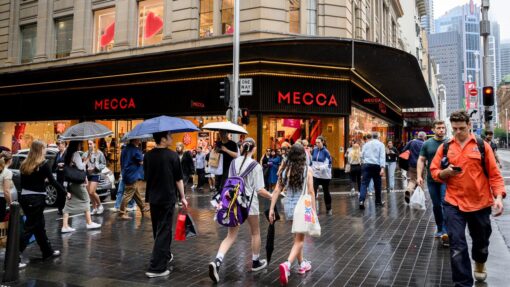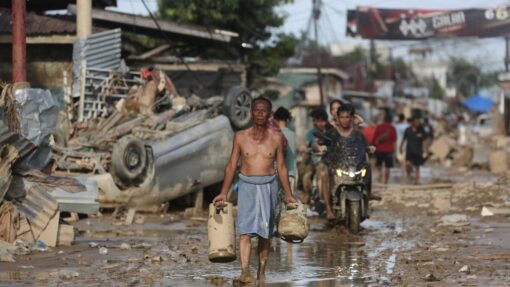Greater jobs growth than G7 countries: PM
Colin Brinsden, AAP Economics and Business Correspondent |
Scott Morrison has lauded the latest employment figures, saying there are around 325,000 more jobs now than before the COVID-19 pandemic.
The Australian Bureau of Statistics said 77,400 people joined the workforce in February, a stronger result than had been expected as the economy recovered from the impact of the Omicron variant outbreak.
However, the devastating flooding along Australia’s east coast could affect March’s figures.
Full-time employment surged by 121,900 in February, while those in part-time work fell by 44,500.
“We have got more people in work today of working age than at any other time of records for jobs in this country,” the prime minister told reporters in Perth on Thursday.
“We have had greater employment growth through the pandemic than any of the G7 countries, the most advanced economies in the world.”
The unemployment rate fell to four per cent in February, its lowest level in more than 13 years, compared with 4.2 per cent in January.
The unemployment rate for women fell to 3.8 per cent, the lowest since May 1974, while for men the rate was 4.2 per cent – the second lowest level since November 2008.
The participation rate of those in work or seeking employment rose by 0.2 percentage points to 66.4 per cent, also an all-time high.
“An extraordinary set of economic numbers that shows the strength and resilience of the Australian economy,” Employment Minister Stuart Robert told reporters in Canberra..
The number of hours worked jumped 8.9 per cent, or by 149 million, in the month, which Mr Robert said was a reflection of coming out of the challenges caused by the COVID-19 Omicron variant outbreak.
Australian Chamber of Commerce and Industry chief executive Andrew McKellar said businesses are looking toward the federal budget on March 29 for measures that will continue to increase workforce participation and plug widespread shortages.
“With workforce shortages at their worst in almost 50 years, we can expect that as the economy continues to strengthen, demands for labour, and associated wage pressure, will further intensify,” he told AAP.
ABS head of labour statistics Bjorn Jarvis said four per cent was the lowest unemployment rate since August 2008 and only the third time in the history of the monthly survey it has been this low.
He said lower rates occurred in the data series before November 1974, when the jobs survey was conducted on a quarterly basis.
The Reserve Bank of Australia and Treasury are each predicting a sub-four per cent unemployment rate this year, and remaining there in 2023.
BIS Oxford Economics head of macroeconomic forecasting Sean Langcake said conditions are primed for wage growth to increase through the year.
“How the pick-up in wage growth materialises will dictate the course of RBA policy,” he said, adding that he expects the central bank to remain patient and keep interest rates on hold until the December quarter.
But KPMG chief economist Brendan Rynne said when the strong jobs result is combined with the US Federal Reserve raising its key rate by 0.25 per cent on Wednesday, it will add to the pressure facing the RBA to raise the cash rate “sooner rather than later”.
AAP


